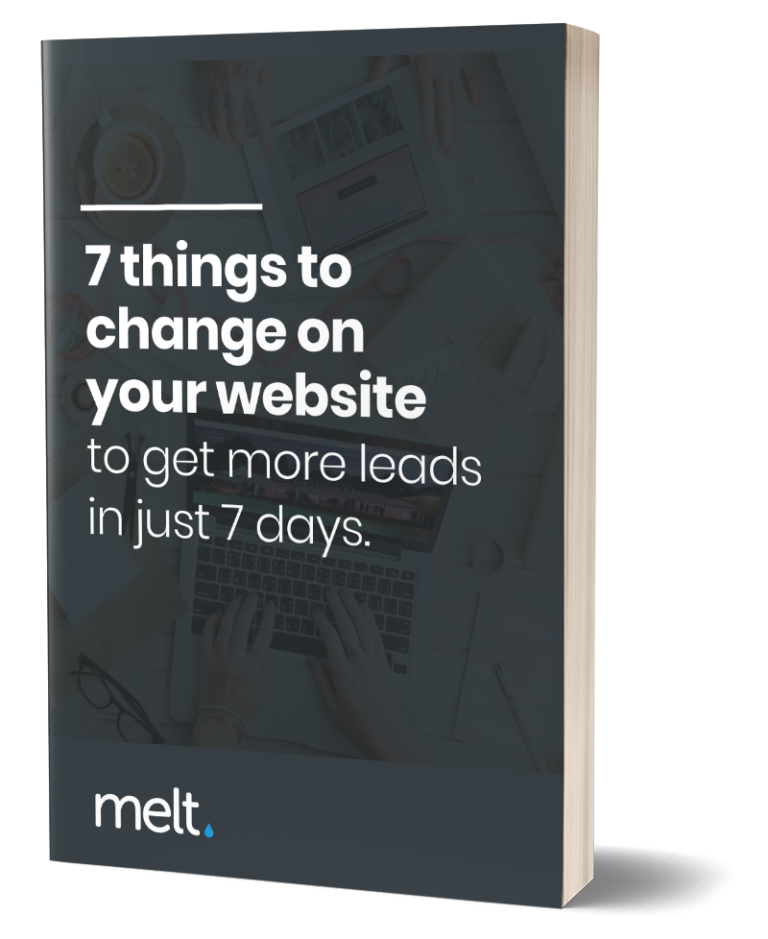In today’s digital landscape, ensuring your small business’s website is SEO-friendly is vital to boosting your online presence and achieving higher search engine rankings. A well-designed, optimised website not only enhances user experience but also makes it easier for search engines to crawl and index your content. As search engine algorithms evolve, it’s crucial for businesses to incorporate best practices in web design that align with the latest SEO principles.
This comprehensive guide will outline essential tips and strategies for creating an SEO-friendly web design that increases your online visibility and propels your business towards success. From optimising your site’s structure and layout to leveraging relevant keywords and streamlining content, this guide will provide valuable insights and actionable steps to unlock your website’s full potential in the ever-evolving world of SEO.
1. Optimise Site Structure and Navigation

Discover where your website is holding you back with a free, personalized audit report. Uncover what's keeping your site from reaching its full potential and start taking action today!
A well-organised site structure is the foundation of an SEO-friendly web design. Ensuring your website has a logical, easy-to-navigate architecture not only improves user experience but also enhances its crawlability by search engines.
a) Create a Clear Hierarchy: Organise your content into relevant categories and subcategories, forming a logical hierarchy that both users and search engines can understand.
b) Use Descriptive URLs: Make your URLs simple, descriptive and keyword-rich to help users and search engines quickly identify the content of each page. Avoid using complex or ambiguous URLs.
c) Implement Internal Linking: Connecting related content within your site through internal links helps search engines discover new content and understand the context of each page. This practice also guides users to additional relevant information and keeps them engaged on your site.
2. Focus on Mobile-Friendly Design
With more than half of all online traffic coming from mobile devices, it’s essential to create a responsive, mobile-friendly web design. This approach not only enhances user experience but also positively impacts SEO, as Google prioritises mobile-optimised websites in search results.
a) Responsive Web Design: Implement a responsive design that seamlessly adapts to various screen sizes, ensuring your website looks and performs well on any device.
b) Touchscreen Navigation: Create easy-to-use touchscreen navigation elements, such as larger buttons and easy-to-tap links, to enhance user experience on mobile devices.
c) Optimise Images and Videos: Compress and resize images and videos to ensure quick load times and optimal display on smaller screens.
d) Eliminate Mobile Unfriendly Features: Avoid using Flash or pop-ups, which can be frustrating for mobile users and negatively impact your website’s bounce rate.
3. Optimise Content for SEO
High-quality, relevant content is the heart of an SEO-friendly web design. By crafting content that appeals to both users and search engines, you can improve the quality of your user experience while increasing your visibility in search results.
a) Conduct Keyword Research: Use keyword research tools, such as Google Keyword Planner or Ahrefs, to identify relevant keywords and phrases your target audience is searching for. Incorporate these terms naturally within your content, meta tags, and URLs.
b) Create Valuable Content: Provide informative, engaging, and valuable content that addresses your audience’s needs. Search engines prioritise high-quality content that offers users a satisfying experience.
c) Optimise Meta Tags: Write meaningful, keyword-rich titles, meta descriptions, and header tags that accurately reflect the content of each page. These tags provide context to search engines and help users decide whether to click on your website in search results.
d) Use Alt Tags for Images: Describe the content of images using alt tags, making your website more accessible for screen readers and providing context to search engines.
4. Improve Site Performance and Speed
Website performance and loading speed have a direct impact on both user experience and search engine rankings. A slow-loading website can lead to increased bounce rates and lower your position in search results.
a) Minify Code: Remove unnecessary characters and whitespace from your HTML, CSS, and JavaScript files to reduce file size and improve load times.
b) Enable Browser Caching: Browser caching allows your site’s files to be temporarily stored on users’ devices for faster load times during subsequent visits.
c) Leverage a Content Delivery Network (CDN): Using a CDN can distribute your content across multiple servers worldwide, reducing the time it takes for users to load your site, regardless of their location.
d) Opt for Lazy Loading: Implement lazy loading for your images and videos, ensuring they only load when users scroll close to them. This technique improves initial load times and conserves bandwidth for users.
5. Utilise Schema Markup
Schema markup is a structured data vocabulary that provides search engines with additional information about your content, potentially improving its presentation in search results and increasing click-through rates.
a) Choose the Appropriate Schema: Identify the most suitable schema markup for your content, such as product, review, or event markup, and add it to your site’s HTML.
b) Test Your Markup: Use Google’s Structured Data Testing Tool or Rich Results Test to ensure your markup is correctly implemented and error-free.
By implementing these essential tips and strategies in your web design, you are well on your way to achieving an SEO-friendly website that stands out in search results and effectively engages your target audience. As the online landscape continues to evolve, staying up-to-date with the latest SEO best practices ensures your small business remains competitive and relevant in an ever-growing digital market.
Unlock the Power of SEO-Friendly Web Design with MELT
Creating an SEO-friendly web design is crucial for small businesses looking to increase their online visibility and thrive in today’s digital landscape. By focusing on site structure, mobile-friendliness, high-quality content, performance, and utilising schema markup, you can enhance user experience and improve search engine rankings.
At MELT, we specialise in delivering expert web design services tailored to the unique needs of your business. Our experienced team of designers and developers will help you craft a website that not only looks stunning but also incorporates the latest SEO best practices. Elevate your online presence and unlock your business’s full potential with the right web design partner by your side.
Get in touch with us today to discuss how we can help transform your website into an SEO success.

